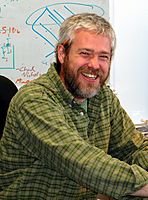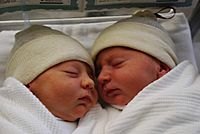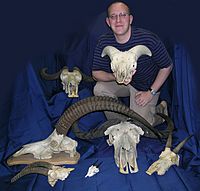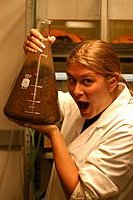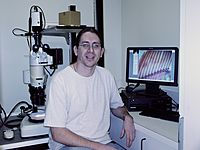
Contents
Experiences in Integrative and Comparative Biology
Al Bennett and Edwin Cooper
Message from the President
John Pearse
Message from the Treasurer
Ron Dimock
Message from the Program Officer
Eduardo Rosa-Molinar
Message from the Past Program Officer
Linda Walters
Message from the Secretary
Lou Burnett
Divisional Newsletters
Comparative Biomechanics (DCB)
Comparative Endocrinology (DCE)
Comparative Physiology and Biochemistry (DCPB)
Developmental and Cell Biology (DDCB)
Evolutionary Developmental Biology (DEDB)
Division of Vertebrate Morphology (DVM): 2008 Spring Newsletter
In this newsletter:
- Message from the Chair
- Message from the Program Officer
- Message from the Secretary
- Minutes of the January 2008 Business Meeting
- Elections: Candidates for DVM Program Officer-Elect and Secretary-Elect
Message from the Chair
Kurt Schwenk
Just once I'd like to write one of these newsletter entries and not sound like a PR hack or SICB shill. I'd tell you how terrible the meetings were, how atrociously bad the science was, what a bunch of jerks our colleagues are, how DVM is moribund, and how there is no hope for the future generation. Alas, I cannot. The San Antonio meetings were great, the papers and posters were excellent, the venue comfortable and convenient, the vast majority of our colleagues are not jerks, and our students are bright, dedicated and flourishing. Perhaps Boston will finally give me the opportunity to break out of this Pollyannaish mold and start using some new and negative adjectives-so much more fun to write! So dust off those old, failed projects that weren't worth publishing, try out those hare-brained schemes that paled in the light of sobriety and figure out how to put greasy thumbprints on PowerPoint slides in time for Boston-or I'm going to have to pull out the thesaurus to find new ways of saying 'great,' 'excellent,' 'fantastic' and so on. What a bore! I'm sure that if we all pull together we could have a truly sucky meeting and a great newsletter!
Speaking of the next generation, I'd first like to congratulate our student prize winners. As usual the judges had a hard time deciding among many excellent competitors. The D. Dwight Davis Award for best oral presentation went to Andrew Farke of Stony Brook University for his talk entitled, "Evolution of the frontal sinuses in Bovidae." The award for Best Student Poster Presentation was split this year between Leah Brown-Wilusz*, an undergraduate student at the University of Connecticut, and Brad Chadwell of Wake Forest University. Leah's poster (with Tobias Landberg) was entitled, "Ontogenetic effects of hatching plasticity in spotted salamanders due to larval and egg predators." Brad's poster (with B.W. Hunter and Miriam Ashley-Ross) was entitled, "When Designing Rays, Function Matters." For additional information see Secretary Gillis' report, below.
I thank Nominating Committee chair Adam Summers and his "crack nominating team," Mason Dean and Dan Huber for identifying an outstanding slate of candidates for our upcoming spring elections (see Secretary's report). I understand from Adam that, although permitted by DVM bylaws, water-boarding was not necessary this year to convince candidates to run (although classified DVM documents reveal that "inappropriate tickling" was needed to get Kris Lappin to commit).
A final word of thanks to Russell Main, who has completed his stint as DVM's representative to the SICB Student/Postdoctoral Affairs Committee. Russ did a great job representing our interests at this important committee and communicating its work. Thanks Russ! I was asked by President Pearse to nominate a new DVM rep to this committee, so, in an egregious act of nepotism, I asked my own senior graduate student, Tobias Landberg, to serve on the committee for the next three years. Tobias agreed and has been duly appointed by President Pearse.
New SPAC rep, Tobias LandbergWith regard to the DVM business meeting in San Antonio, which I am happy to report was very well attended, I need to clarify some confusion that I created because of my faulty memory. I raised the subject of the D. Dwight Davis Award and specifically, the number of times a student can compete. There was some heated discussion about the issue from all sides, but as it happens, I erred in opening the topic for discussion at all. The facts: at the urging of former Program Officer David Carrier two years ago, the issue had already been discussed at the previous business meeting, changes to the bylaws were proposed by the DVM Executive Committee during early 2007, the proposed changes were posted on the web for comment by membership and subsequently approved by a nearly unanimous vote. The revised bylaws governing the Davis Award competition state that a student can compete no more than two times. The spirit of the change is to enforce the existing bylaws that state only exceptionally strong work is to be entered in the competition - and to make judging physically practicable. Unfortunately, the changes to the bylaws were made during the transition phase between the Brainerd and Schwenk regimes and I failed to recall the outcome of the deliberations. I apologize for wasting the time of the membership who attended the business meeting. Since this issue was obviously new to many people at the meeting, we are always free to re-open the discussion in the future. In the meantime, please visit the following link to read the current DVM bylaws in regard to the student prizes (scroll to the bottom of the page): http://www.sicb.org/about/constitution.php3#dvmbylaws.
Given the confusion I caused at the business meeting with regard to the Davis Award competition, and in consultation with the Divisional Executive Committee, I have declared a general amnesty for students who have already competed - obviously there has not been time for the word to get out. Therefore, the two-paper rule will be enforced starting at the Boston annual meeting in 2009. As such, if you competed in San Antonio (or at a previous annual meeting), it will not count toward your limit of two competitions. Please get the word out to your friends, students and colleagues. Forewarned is forearmed.
Note that there is no restriction on the number of times a student can compete in the poster prize competition. We had only ten DVM student posters entered in the San Antonio competition and we'd like to see more.
In conclusion, I look forward to seeing many of you in Boston. I don't have to tell you that Boston is a great town - and even though we're all going to do our best to make it a lousy meeting, we'll have fun doing it. This is the second time that the SICB meetings have been in Boston since I've been faculty at UConn. This suggests to me that I am, indeed, getting old (as if I needed more evidence).
*In the interests of transparency, I note that Leah Brown-Wilusz is an undergraduate student working in my laboratory with graduate student Tobias Landberg. Neither I, nor Margaret Rubega (also of the University of Connecticut), was involved in the poster prize decision.
Message from the Program Officer
Jeff Walker
Kudos to all for a most excellent San Antonio meeting. Great organization, great site, great science, great seeing old friends and meeting new ones. We should all extend our sincerest appreciation to the organizers of the three DVM-sponsored and two late-breaking symposia, including Gabriel Rivera, Rick Blob, Shigeru Kuratani, Thomas Schilling, Thomas Kunz, Nick Hirstov, and Eric Lovely, Mike Alfaro, Nicolai Konow, and Shannon Gerry. The many, many concurrent sessions with DVM-related talks kept our minds (and bodies) busy, but this is good as it highlights the strength of our division at these meetings! Again, the poster sessions were a huge success and I would strongly encourage everyone to consider this format. At our next annual meeting in balmy Boston, there will be several symposia that should be of broad interest to DVMers, including:
Jerry Husak's "Hormonal Regulation of Whole-Animal Performance: Implications for Selection"
Matt McHenry's "Sensory Biomechanics"
Brook Swanson's "Biomaterials: Properties, Variation and Evolution"
Darrin Hulsey's "Genomics and Vertebrate Adaptive Radiation: A Celebration of the First Cichlid Genome"
These titles alone highlight DVM members' strongly integrative research programs. It is also time to organize creative, integrative symposia for our 2010 annual meeting. Think: what is the cutting edge of my field? What are the common themes that my field is pursuing and how are we pursuing these? What developments have occurred in the last few years that have advanced my field into new directions? Or maybe, how have these disparate fields come together to form a new discipline? Remember to seek both internal and external sponsorship for your proposed symposium. Internal sponsorship is easy; simply talk to the program officers of the relevant divisions. External support is well worth the effort as the society will waive registration fees for symposium organizers that actively seek external support for symposia. More importantly, all of the symposia in 2008 successfully secured external support, five of these from NSF. Be creative with external sources of support. And remember that certain external sponsors, such as NSF, strongly encourage diversity among symposium speakers. Given that a typical, full-day symposium has only eleven speakers, symposium organizers should consider contacting colleagues to submit a contributed paper to a complementary session. Finally, if your symposium idea is simply too cutting edge to wait until 2010, then you can submit it as a late-breaking symposium for 2009 Boston. But you must defend its edginess! I hope everyone has a productive spring and summer and look forward to seeing the abstracts for Boston.
Message from the Secretary
Gary's reason(s) for missing San Antonio
Gary Gillis
I had two very good reasons, each weighing in at about 6.5 pounds, for missing the San Antonio meetings. Don't worry, they won't stop me next year, in fact, my current plan is to bring Ben and Matt, to Boston next year! Mark Westneat graciously filled my role at the meeting, and much of what is written below is thanks to him.
2008 Student Award Winners
Davis Award
Andrew FarkePoster Award
Leah Brown-Wilusz(Tie)Poster Award
Brad Chadwell
This year's D. Dwight Davis award winner is Andrew Farke from Stonybrook University whose work on the functional morphology and evolution of the frontal sinuses of bovids impressed all the judges. Andrew is particularly intrigued by his results suggesting that phylogenetic factors rather than mechanical loading conditions seem to have the strongest impact on sinus morphology in this clade of horned mammals. The DVM poster award is being shared between two students: Leah Brown-Wilusz from the University of Connecticut and Brad Chadwell from Wake Forest University. Leah's work with Tobias Landberg on hatching plasticity in spotted salamanders in relation to predation revealed trade-offs in which early hatching in response to egg predators led to a reduced ability to respond to larval predators. Brad's work with Brad W. Hunter and Miriam Ashley-Ross on the functional anatomy of median fins in bluegill sunfish demonstrates morphological variation among rays at different positions in the fin that may be linked to differences in the forces experienced at the different locations. On behalf of the entire division, I want to extend a sincere congratulations to our award winners and all the other DVM students who consistently present excellent work and raise the quality of our meetings!
Minutes of the January 2008 Business Meeting
This year we will have elections for both Program Officer-Elect and Secretary-Elect. Please vote!
Candidates for DVM Program Officer-Elect
Richard W. Blob
Current Position: Associate Professor, Department of Biological Sciences, Clemson University, http://people.clemson.edu/~rblob/
Education: Ph.D. 1998: University of Chicago (Evolutionary Biology); B.A. 1992: University of Pennsylvania (Biology, Individualized Studies - Paleobiology)
Professional Experience: 2007-present: Associate Professor, Department of Biological Sciences, Clemson University (courses taught include Vertebrate Biology, Comparative Vertebrate Morphology, Animal Biomechanics, Vertebrate Paleobiology; Tropical Biodiversity); 2002-2007: Assistant Professor, Department of Biological Sciences, Clemson University; 1999-2001: NIH Postdoctoral Fellow, Field Museum of Natural History (Zoology); 1998-1999: Senior Assistant Collections Manager, Field Museum of Natural History (Fossil Mammals)
Awards and Honors: 2007: Mentorship Award, National Scholars Program, Clemson University; 2006: Teacher of the Year (under ten years experience), Clemson University, College of Agriculture, Forestry, and Life Sciences; 2004: Outstanding Young Researcher, Sigma Xi Clemson Chapter; 1998: Best Student Poster, SICB-DVM; 1997: Society of Vertebrate Paleontology Predoctoral Fellowship; 1992: Henry Darwin Rogers Award in Geology, University of Pennsylvania; 1992: Phi Beta Kappa; 1992: NSF Predoctoral Fellowship
SICB Activities: 2008: symposium co-organizer (with G. Rivera), "Going with the Flow" Symposium for San Antonio annual SICB meeting; 2008: Judge, DVM Davis Award committee and DCB Best Student Presentation committee; 2003: Chair, DVM Davis Award committee; 2002: DVM Davis Award judge; 2001: DVM nominating committee
Research Interests: Evolutionary morphology and biomechanics of the vertebrate musculoskeletal system, with a primary focus on locomotion in reptiles, amphibians, and fishes. Other areas of interest include the evolution of bone mechanical properties, evolution of aquatic/terrestrial habitat transitions, fish and reptile feeding, ontogeny of musculoskeletal function, and biomechanical modeling of functional capabilities in fossil taxa.
Other Memberships: American Society of Ichthyologists and Herpetologists, Herpetological Association of Africa, Herpetologists' League, International Society of Vertebrate Morphology, Sigma Xi, Society for Experimental Biology, Society for the Study of Amphibians and Reptiles, Society of Systematic Biologists, Society of Vertebrate Paleontology
Goals as Program Officer: This is an interesting time for DVM, with opportunities and challenges stemming from the same recent trends and developments: (1) continued growth of interest and participation in the fields DVM represents, and (2) the founding of the Division of Comparative Biomechanics. As Program Officer, I will work to ensure coordination with the other Divisions, particularly DCB, so that the organization of meeting programs and symposia maximize access to the exciting research produced by our members and related Divisions. This is the best way to ensure that we all leave the meetings fired up to act as advocates for the field of Vertebrate Morphology, promoting the importance of research and teaching in morphology at our home institutions and in broader venues. This is critical for the future of the discipline as funding support for basic research continues to be limited. I will also work to promote DVM's excellent tradition of fostering student participation and development. These efforts can range from providing constructive feedback for student presentations, to promoting existing regional meetings (and instigating new ones!) as a forum for students to present research and get to know each other. Even though vertebrate morphology is a more exciting field than ever, we need to work integratively with other fields and engage the next generation of morphologists if we are going to keep our future strong.
Alice C. Gibb
Current Position: Associate Professor, Department of Biology, Northern Arizona University, http://jan.ucc.nau.edu/~acg/
Education: 1997. Ph.D. Biological Sciences, University of California, Irvine; 1989. B.A. Biological Sciences, Mt. Holyoke College
Professional Experience: 2005-2008. Associate Professor, Department of Biology, Northern Arizona University; 1999-2005. Assistant Professor, Department of Biology, Northern Arizona University; 1997-1999. NSF Postdoctoral Researcher, California State University, Fullerton
Awards and Honors: 1986. Abby Howe Turner Award from Mount Holyoke College for excellence in the Biological Sciences; 1987. Bernice MacLean Award from Mount Holyoke College for excellence in the Biological Sciences; 1989. Graduated cum laude with Highest Honors in Biological Sciences from Mount Holyoke College; 1993. D. Dwight Davis Award for Best Student Paper in Vertebrate Morphology from the American Society of Zoologists; 1994. F. Earl Durham, Jr. Award for Best Student Paper in Vertebrate Morphology from the Southern California Academy of Sciences; 1995. Jules M. Crane Award for Best Student Paper in General Biology from the Southern California Academy of Sciences; 1996. Storer Award for the Best Student Poster in Ichthyology from the American Society of Ichthyologists and Herpetologists; 1996. Edward A. Steinhaus Teaching Award from the School of Biological Sciences, University of California, Irvine; 1996. Best Student Poster from Sigma Chapter of Graduate Women in Science
SICB Activities: 1999. Committee Chair, D. Dwight Davis Award for Best Student Paper in Vertebrate Morphology, Society of Integrative and Comparative Biology; 1999-2002. Panel member, Student Grants-in-aid-of-Research, Society of Integrative and Comparative Biology; 2001. Organizer and participant: "Molecules, Muscles, and Macroevolution: Integrative Functional Morphology" for the Society of Integrative and Comparative Biology; Proceedings published in Int. and Comp. Biol.
Research Interests: I am interested in the morphological and physiological basis of behaviors critical to individual fitness, especially prey capture and locomotion. Although I am broadly interested in functional morphology, animal behavior, and the comparative method, my research focuses on several specific aspects of these disciplines. (1) Developmental morphology and physiology: the development of animal behaviors and their associated morphological and physiological systems. (2) Environmental functional morphology: the relationship between animal behavior, performance and survival in the wild. (3) Biomechanics: the study of the physical constraints that intrinsic and extrinsic factors place on animal behaviors.
Other Memberships: American Fisheries Society; Sigma Xi
Goals as Program Officer: A continuing challenge facing the Division of Vertebrate Morphology is to retain our visibility and identity in the face of cross-divisional sessions and symposia at the annual meetings and the addition of new divisions to the society. These relatively recent changes to the society may be best perceived as new venues in which we can demonstrate the strength and flexibility of a morphological approach for understanding evolutionary patterns and animal behavior. To this end, as program officer, I will advocate that we retain the current format whereby DVM students compete for best student paper (the D. Dwight Davis Award) during cross-divisional sessions that are comprised of students, faculty and other professional scientists. This allows our students to receive exposure and feedback on their presentations that will enhance both their research and their future career opportunities. Second, I will follow the tradition of previous program officers and work with the societal program officer to create focused, balanced, cross-divisional sessions that facilitate our ability to reach out to individuals outside of our discipline and potentially allow us to form new collaborations. Finally, I will work with the other divisional program officers to revise and refine the keywords and processes used to organize talks and posters into sessions in an ongoing effort to increase the cohesion and focus of each session at the annual meeting.
Candidates for DVM Secretary-Elect
Lara Ferry-Graham
Current Position: Research Faculty, California State University/Moss Landing Marine Laboratories, http://ecomorphology.mlml.calstate.edu/ferry.htm
Education: 1998. Ph.D. Ecology and Evolutionary Biology, University of California, Irvine; 1994. M.S. Marine Science, San Francisco State University/Moss Landing Marine Laboratories; 1991. B.S. Biological Sciences, California Polytechnic State University, San Luis Obispo
Professional Experience: 2003-2008. Research Faculty, Moss Landing Marine Labs; 2006, 2008. Visiting Assistant Professor Summer Session, Friday Harbor Labs, University of Washington; 2005. Visiting Assistant Professor, Universidad de Catolica Norte, Coquimbo, Chile; 1999-2002. Postdoctoral Researcher, Center for Population Biology; U.C. Davis; 1998-1999. Postdoctoral Researcher, Comparative Physiology Group, U.C. Irvine
Awards and Honors: 1998, 1999. Excellence in Teaching, U.C. Irvine; 1997. Durham Award for Best Student Paper in Vertebrate Zoology, So. Cal. Academy of Sciences; 1996. Stoye Award/Best Student Paper in Genetics, Development and Morphology, ASIH; 1995. Best Student Paper, AES; 1994. Stoye Award/Best Student Paper in Ecology and Ethology, ASIH
SICB Activities: 1999, 2007. Judge, DVM Best Student Paper Award; 2001. DVM Symposium Co-Organizer, "Molecules, Muscles, and Macroevolution"
Research Interests: 1) the diversity of form (muscle + bone complexes) and consequence, if any, of that diversity from a simple biomechanical perspective; 2) the evolution of novel and/or specialized forms, and; 3) how form, typically by interacting with other physiological, behavioral, or genetic variables, affects and can be used to predict ecological relationships.
Other Memberships: American Society of Ichthyologists and Herpetologists (ASIH), American Elasmobranch Society (AES), American Fisheries Society (AFS), Western Society of Naturalists (WSN), Society for the Study of Evolution (SSE)
Goals as Secretary: The central issue for DVM in the past few years, and the years to come, is Membership and our place within a changing SICB. I think we have seen already that the new Division of Comparative Biomechanics has not hurt our overall numbers, but provided a mechanism for the morphologically inclined, such as we are, to interact with those that think about similar issues in those creatures without vertebrae (and even the occasional autotroph). DCB was a successful addition to SICB, just as Evo Devo was before that, because we are integrative biologists at heart. Yet, for many of us, DVM remains our home - we started here as graduate students, and we will always list this division as our primary association within SICB. The job that lies ahead is (re)defining DVM, and its unique contribution, in the presence of many complementary divisions. The study of vertebrate morphology will always be a central part of SICB as much of the research that is conducted by its members can be traced to, at its core, this very discipline. Therefore, DVM will always have its place within SICB, so long as we continue to highlight this centrality. The key to our future, I believe, is communication and collaboration with the other SICB divisions in a way that highlights our strength as an individual division, but also personifies why we are part of a society that embodies the name "integrative". Our message - Vertebrate Morphology is a field that manages to be simultaneously both "old school", thanks to our honored tradition in anatomical study, and cutting edge, due largely to the integration of fabulous new tools and techniques - both facets are essential for making scientific progress, even today. I believe as Secretary it will be my job to help ensure our vitality as a division by maintaining communications with the SICB-wide membership and leadership, as well as other divisions; to encourage such collaboration; and to invite membership in DVM.
A. Kristopher Lappin
Current Position: Assistant Professor, Biological Sciences Department; California State Polytechnic University, Pomona, http://www.csupomona.edu/~aklappin/
Education: 1999, Ph.D. (Integrative Biology). University of California, Berkeley; 1991, B.S. (Zoology). University of California, Davis
Professional Experience: 2006-2008, Assistant Professor of Biological Sciences. Biological Sciences Department. California State Polytechnic University, Pomona; 2004-2006,Research Associate. Department of Biological Sciences. Northern Arizona University; 2000-2004, Post-doctoral Associate. Department of Biological Sciences. Northern Arizona University
Awards and Honors: 1996: D. Dwight Davis Award for Best Student Paper Oral Presentation; 1995: ARCS Scholar; 1995: Regents’ Fellowship (UC Berkeley); 1993: NSF Pre-doctoral Fellowship—Honorable Mention
SICB Activities: Member since 1994; DVM Poster and D. Dwight Davis Prize Judge, 2008
Research Interests: Evolutionary and functional morphology of feeding, combat, and display; evolution of sexual dimorphism; biomechanics and muscle mechanics involved with ballistic movements.
Other Memberships: American Society of Naturalists; International Society of Vertebrate Morphologists
Goals as Secretary: I am honored to be nominated for DVM Secretary. I have been attending SICB meetings for over a decade, and the DVM has always been my home. Of all academic meetings I have attended, these have played the most significant role in my professional development. It is time that I give something back. Vertebrate Morphology has a rich history that must be preserved. At the same time, our field continues to rapidly evolve. My goal as DVM Secretary would be to make the DVM as accessible and appealing as possible to students, both at the undergraduate and graduate levels. As scientists and teachers, we are trained to do just this. After all, the future of the Society and the DVM rests on the attraction and retention of new student members.
Link to officer list on DVM page
